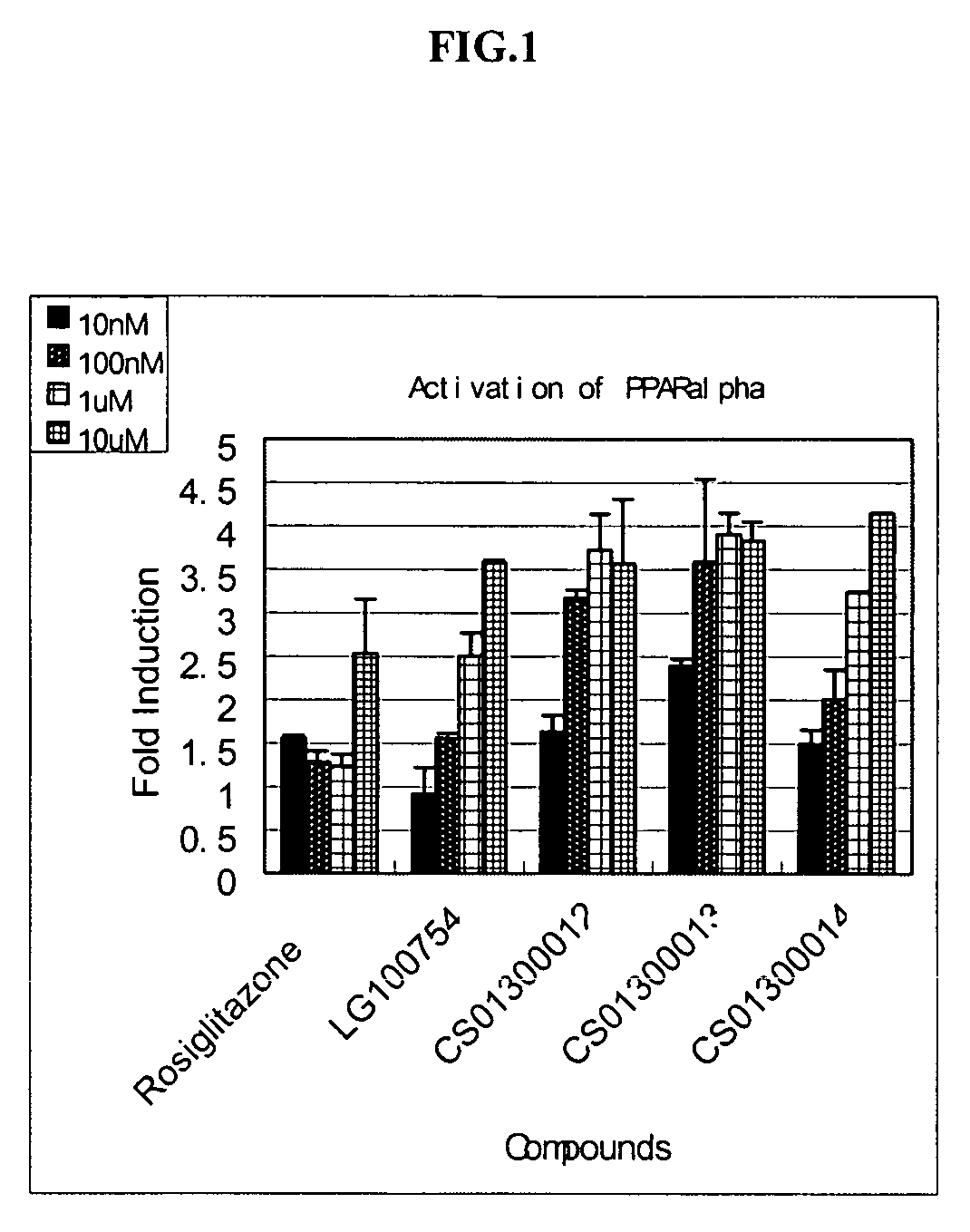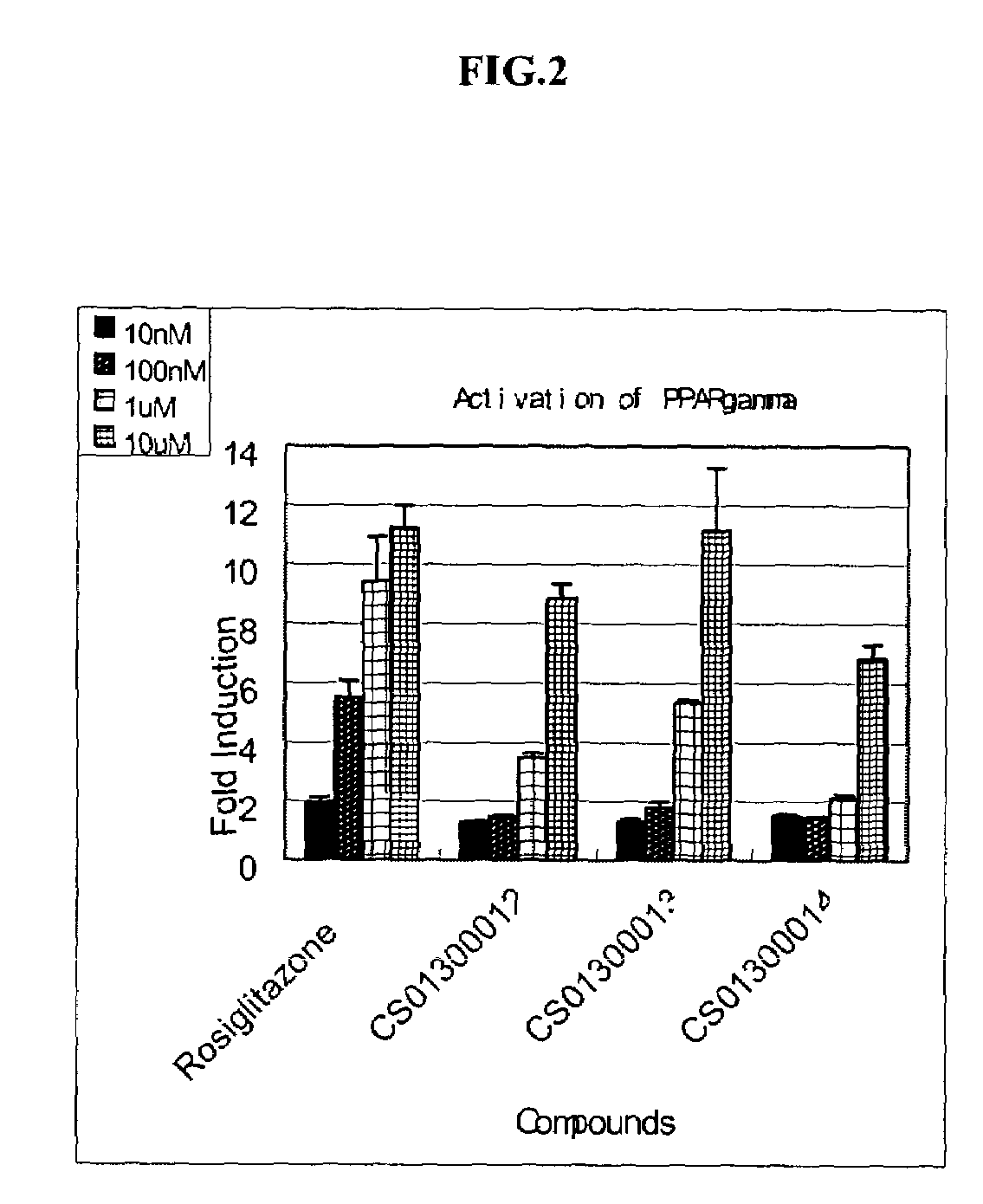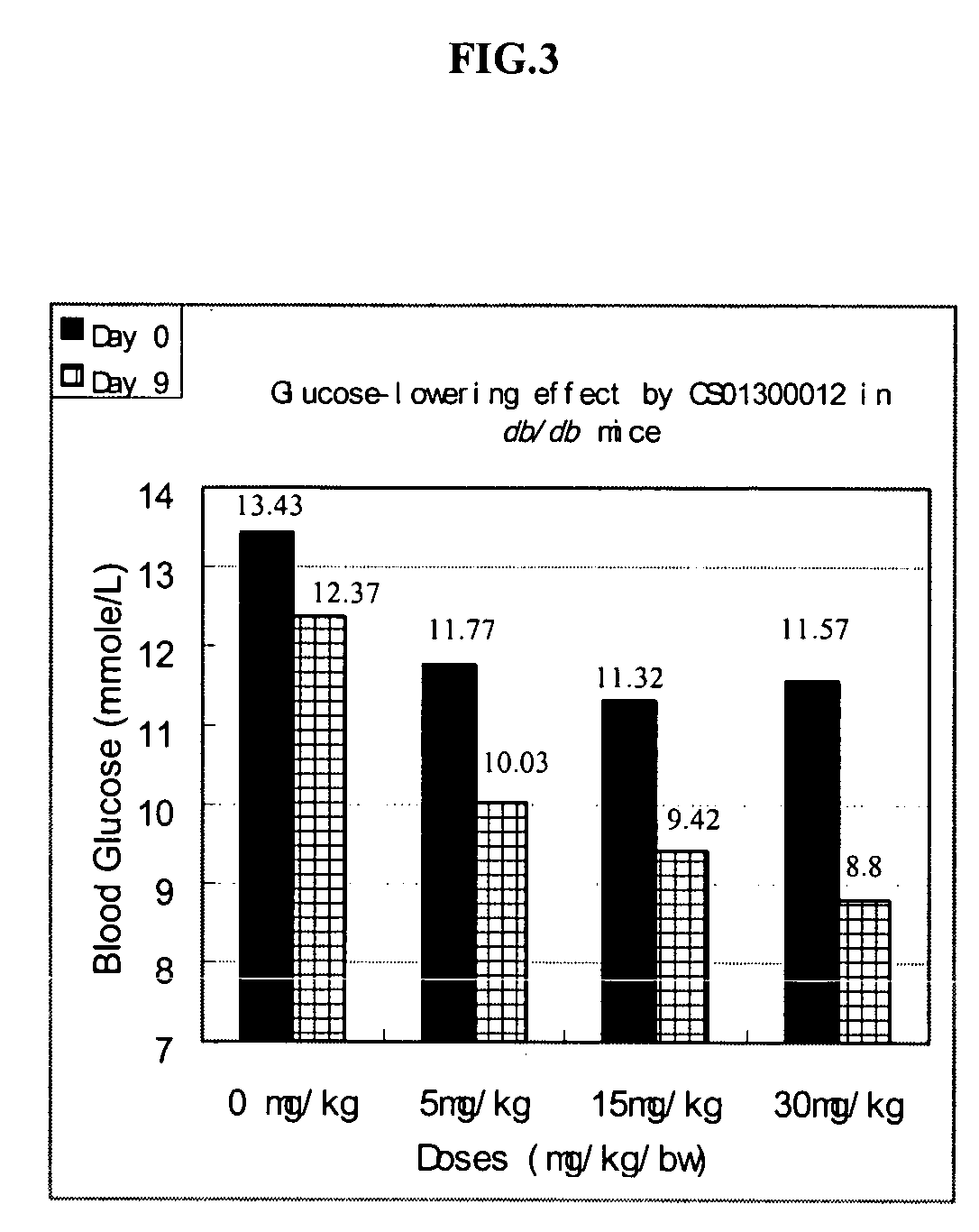Noncyclic 1,3-dicarbonyl compounds as dual PPAR agonists with potent antihyperglycemic and antihyperlipidemic activity
a technology of dicarbonyl compounds and dicarbonyl compounds, which is applied in the field of preparation and pharmaceutical use of noncyclic 1, 3dicarbonyl analogs, can solve the problems of insufficient plasma insulin levels to overcome, little protection from eminent cardiovascular risk associated with type 2 diabetes, and sulfonylurea therapy
- Summary
- Abstract
- Description
- Claims
- Application Information
AI Technical Summary
Benefits of technology
Problems solved by technology
Method used
Image
Examples
example 1
Preparation of 2,5-dichloro-2,5-dimethylhexane
[0091]
[0092]Thionyl chloride (25 ml, 341.8 mmol) is added at ambient temperature to a solution of 2,5-dimethyl-2,5-hexanediol (20.0 g, 136.8 mmol) in 250 ml of dichloromethane. The reaction mixture is stirred for 4 hours. Then 250 ml of distilled water is added. The organic phase is separated and washed with 10% NaHCO3 solution (2×250 ml), then dried over MgSO4 and evaporated to dryness to give the title compound (18.37 g, 73%).
[0093]1H NMR (CDCl3): 1.57 (s, 12H, CH3); 1.92 (s, 4H, CH2).
example 2
Preparation of 5,5,8,8-tetramethyl-5,6,7,8-tetrahydro-2-naphthol
[0094]
[0095]To a mixture of aluminum trichloride (3.0 g, 22.5 mmol), dichloromethane (50 ml) and 2,5-dichloro-2,5-dimethylhexane (15.0 g, 81.9 mmol) is added dropwise into a solution of phenol (7.7 g, 81.90 mmol) in 50 ml of methane dichloride, then the reaction mixture is heated for 4 hours at 35° C. After cooled, the reaction mixture is poured into ice (200 g) and extracted with ether (3×80 ml). The organic phase is washed with 10% NaHCO3 solution (2×150 ml), dried over MgSO4 and evaporated to give a crude product, which is crystallized from ethanol to give the title compound (15.20 g, 84%).
example 3
Preparation of 4-(2-bromoethoxy)benzaldehyde
[0096]
[0097]To a solution of potassium hydroxide (3.70 g, 54.0 mmol) in ethanol (50 ml) is added 4-hydroxybenzaldehyde (6.00 g, 49.1 mmol) and 1,2-dibromoethane (46.15 g, 245.7 mmol). Then the mixture is heated to reflux for 8 hours. After cooled, the reaction mixture is evaporated under vacuum. The residue is dissolved in water and extracted with dichloromethane (3×50 ml). The organic phase is washed with water (3×50 ml), dried over MgSO4 and evaporated to give a crude product, which is crystallized from ethanol to give the title compound (4.60 g, 41%).
PUM
| Property | Measurement | Unit |
|---|---|---|
| temperature | aaaaa | aaaaa |
| catalytic quantity | aaaaa | aaaaa |
| pharmaceutical composition | aaaaa | aaaaa |
Abstract
Description
Claims
Application Information
 Login to View More
Login to View More - R&D
- Intellectual Property
- Life Sciences
- Materials
- Tech Scout
- Unparalleled Data Quality
- Higher Quality Content
- 60% Fewer Hallucinations
Browse by: Latest US Patents, China's latest patents, Technical Efficacy Thesaurus, Application Domain, Technology Topic, Popular Technical Reports.
© 2025 PatSnap. All rights reserved.Legal|Privacy policy|Modern Slavery Act Transparency Statement|Sitemap|About US| Contact US: help@patsnap.com



